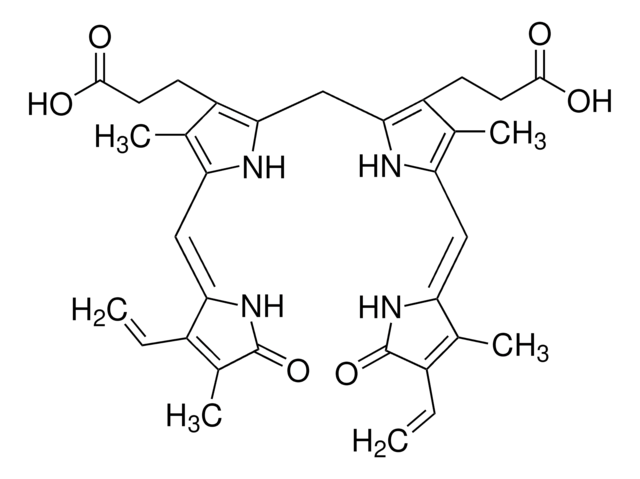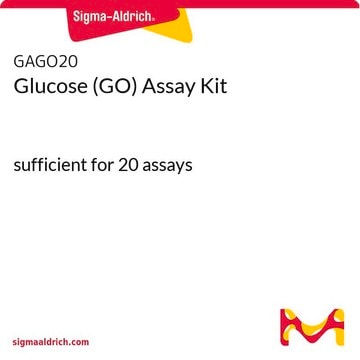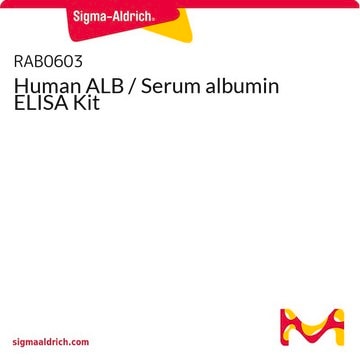All three kits have been used with mouse samples.
MAK126
Bilirubin Assay Kit
sufficient for 180 colorimetric tests
Synonym(s):
Hematoidin Assay Kit
Select a Size
Select a Size
About This Item
Recommended Products
usage
sufficient for 180 colorimetric tests
detection method
colorimetric
relevant disease(s)
hematological disorder; gastrointestinal diseases
storage temp.
2-8°C
General description
Application
Features and Benefits
Suitability
Principle
Storage Class Code
12 - Non Combustible Liquids
Flash Point(F)
Not applicable
Flash Point(C)
Not applicable
Choose from one of the most recent versions:
Certificates of Analysis (COA)
Don't see the Right Version?
If you require a particular version, you can look up a specific certificate by the Lot or Batch number.
Already Own This Product?
Find documentation for the products that you have recently purchased in the Document Library.
Customers Also Viewed
-
Can you please confirm me if these assays works with mouse samples?
1 answer-
Helpful?
-
-
What is a typical absorbance range for the 5 mg/dL standard in the MAK126 Bilirubin Assay Kit?
1 answer-
The OD that represents 5mg/dL bilirubin was determined to be 0.52-0.56 during the development of the kit.
Helpful?
-
-
Does this kit work with urine samples?
1 answer-
Kit MAK126 has not been tested on urine samples, so it is not something that can be guaranteed, but it is likely that urine would be okay as long as the concentration falls within the detection range of the kit. Bilirubin does not typically contain urine, so it may not exhibit a response from the kit unless the urine in question comes from a subject with a certain liver condition.
Helpful?
-
-
Can I use the Bilirubin Assay Kit (MK126) to do Bilirubin Assay for mouse?
1 answer-
This Billirubin Assay is not species specific. It has not been tested specifically on mouse serum, however there is no reason to suspect that this kit would not be suitable. Please see the links below to review publications utilizing this product with mouse serum:
https://doi.org/10.3389/fphar.2018.00410
https://doi.org/10.1152/ajpheart.00882.2014
https://doi.org/10.1002/path.5685Helpful?
-
-
Hola. Deseo medir bilirrubina total en una colección de sueros que se han mantenido congelados a -70ºC varios meses. Necesitaría saber si su kit es recomendable para estas muestras y la cantidad mínima de suero (humano) que se puede usar por reacción. Gcs
1 answer-
Measurement of Total and Direct Bilirubin requires a total of 150 microliters of sample (50 microliters each for Total, Direct, and Sample Blank). Serum (frozen or fresh) is a suitable sample for use with the kit.
https://www.sigmaaldrich.com/deepweb/assets/sigmaaldrich/product/documents/254/564/mak126bul.pdf
Helpful?
-
Active Filters
Our team of scientists has experience in all areas of research including Life Science, Material Science, Chemical Synthesis, Chromatography, Analytical and many others.
Contact Technical Service





